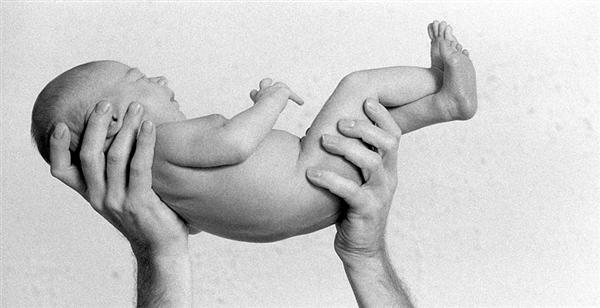| GRAPHIC
Beyond
the Double Helix
Since Watson and Crick discovered DNA's structure
in 1953, scientists have realized the double helix is only one part
of our genetic makeup. The latest portrait of our basing building
blocks.
Changing
Portrait of DNA
Randy Jirtle Rick Young. Gregor
Mendel - Complete articleChanging
Portrait of DNA
Every day, it seems, scientists learn something new about how our
genes work. The latest insights into the dazzling and complex machinery
of life itself. The second is about an observation with a mouse experiment
that promotes inherited mutant genes from fully expressing themselves
by pre-conception eating of a diet high in folate - like leafy greens
and plant based proteins. And the best news is the second researcher
is at Duke University in North Carolina Randy Jirtle.
“Four years ago, a Duke University biologist named Randy Jirtle
began an elegant little experiment that would ultimately lead him
to confront one of life's biggest mysteries. He started with two groups
of mice that gave birth to sets of identical babies carrying the same
genes. The babies were raised the same way from birth. They should
have looked alike but instead, they barely looked related. In the
first group, the babies were overweight, prone to diabetes and cancer
and covered in fur the color of rancid butter. The mice in the second
group were beautiful: lean, healthy, brown. Same nature, same nurture,
radically different outcomes. What was going on. . .?”


Professor, Department of Radiation
Oncology,Duke University Medical Center
Education
and Training
Phone: (919) 684-2770 – E-mail: jirtle@radonc.duke.edu
Fertile Steril. 2004 Oct;82(4):926-9.
Preimplantation
genetic diagnosis for polycystic kidney disease.
Verlinsky Y, Rechitsky S, Verlinsky O, Ozen
S, Beck R, Kuliev A.
Reproductive Genetics Institute, Chicago, Illinois 60657, USA.
OBJECTIVE:
To use preimplantation genetic diagnosis for achieving a polycystic
kidney disease (PKD)-free pregnancy for a couple in which the female
partner was affected by PKD but whose PKD1 or PKD2 carrier status
was not established.
The IVF (In Vitro Fertilization) program of Reproductive Genetics
Institute, Chicago, Illinois.
PATIENT(S):
An at-risk couple with the female partner affected by PKD, whose PKD1
or PKD2 carrier status was not established.
INTERVENTION(S):
Removal of PB1 and PB2 and testing for three closely linked markers
to PKD1 (Kg8, D16S664, and SM7) and four closely linked markers to
PKD2 (D4S2922, D4S2458, D4S423, and D4S1557) after standard IVF. MAIN
OUTCOME MEASURE(S): Deoxyribonucleic acid analysis of PB1 and PB2
indicating whether corresponding oocytes were PKD1 or PKD2 allele
free, for the purpose of transferring only embryos resulting from
mutation-free oocytes. RESULT(S): Of 11 oocytes tested by PB1 and
PB2 DNA analysis, 7 were predicted to contain PKD1 or PKD2, with the
remaining 4 free of both mutations. Three embryos resulting from these
oocytes were transferred, yielding a twin pregnancy and the birth
of two unaffected children. CONCLUSION(S): This is the first preimplantation
genetic diagnosis for PKD, which resulted in the birth of healthy
twins confirmed to be free of PKD1 and PKD2. Preimplantation genetic
diagnosis based on linked marker analysis provides an alternative
for avoiding the pregnancy and birth of children with PKD, even in
at-risk couples without exact PKD1 or PKD2 carrier information.
Nephrol Dial Transplant (2003) 18: 190-191
Infertility
in adults with polycystic kidney disease
Because of the high prevalence in ADPKD of seminal
cysts that can cause obstruction of the ejaculatory duct and other
abnormalities such as axonemal 9+0 defect, consideration should be
given to fertility in the initial evaluation of these patients, before
the onset of uraemia further reduces their ability to conceive. Patients
with ADPKD, whose analysis of ejaculation is still normal, should
be offered the opportunity for sperm cryopreservation, while those
with oligateratospermia and normal testicular biopsy could be considered
for early microscopic epididymal sperm aspiration for in vitro fertilization.
YogAmazing
- Yoga Lifestyle Video Podcast.
These episodes are free from the iTunes Music Store. Just subscribe
download.
episode 91 - Yoga for the Libido
episode 22 - Restorative Yoga
episode 43 - Yoga for Fertility
episode 51 - Yoga for Pregnancy
episode 35 - Yoga for PMS
HEALTH FOR LIFE
Fat,
Carbs and the Science of Conception

In a groundbreaking new book, Harvard researchers look at the role
of diet, exercise and weight control in fertility. Guarantee: you
will be surprised.
With the help of more than 18,000 women taking part in the Nurses'
Health Study, a long-term research project looking at the effects
of diet and other factors on the development of chronic conditions
such as heart disease, cancer and other diseases. Each of these women
said she was trying to have a baby. Over eight years of follow-up,
most of them did. About one in six women, though, had some trouble
getting pregnant, including hundreds who experienced ovulatory infertility—a
problem related to the maturation or release of a mature egg each
month. When we compared their diets, exercise habits and other lifestyle
choices with those of women who readily got pregnant, several key
differences emerged. We have translated these differences into fertility-boosting
strategies.
Eating lots of easily digested carbohydrates (fast carbs), such as
white bread, potatoes and sugared sodas, increases the odds that you'll
find yourself struggling with ovulatory infertility. Choosing slowly
digested carbohydrates that are rich in fiber can improve fertility.
More than any other nutrient, carbohydrates determine your blood-sugar
and insulin levels. When these rise too high, as they do in millions
of individuals with insulin resistance, they disrupt the finely tuned
balance of hormones needed for reproduction. The ensuing hormonal
changes throw ovulation off-kilter. Different carbohydrate sources
can have different effects on blood sugar, insulin and long-term health.
Carbohydrates
In general, cold breakfast cereals, white rice and potatoes were linked
with a higher risk of ovulatory infertility. Slow carbs, such as brown
rice, pasta and dark bread, were linked with greater success getting
pregnant.
Fats
In 2003, the government of Denmark made a bold decision that is helping
protect its citizens from heart disease: it essentially banned trans
fats in fast food, baked goods and other commercially prepared foods.
That move may have an unexpected effect—more little Danes. Exciting
findings from the Nurses' Health Study indicate that trans fats are
a powerful deterrent to ovulation and conception. Eating less of this
artificial fat can improve fertility, and simultaneously adding in
healthful unsaturated fats whenever possible can boost it even further.
Unsaturated fats do things to improve fertility—increase insulin
sensitivity and cool inflammation—that are the opposite of what
trans fats do. That is probably why the largest decline in fertility
among the nurses was seen when trans fats were eaten instead of monounsaturated
fats.
Plant proteins
Findings from the Nurses' Health Study indicate that getting more
protein from plants and less from animals is another big step toward
walking away from ovulatory infertility. We found that women in the
highest-protein group were 41 percent more likely to have reported
problems with ovulatory infertility than women in the lowest-protein
group.
When we looked at animal protein intake separately from plant protein,
an interesting distinction appeared. Ovulatory infertility was 39
percent more likely in women with the highest intake of animal protein
than in those with the lowest. The reverse was true for women with
the highest intake of plant protein, who were substantially less likely
to have had ovulatory infertility than women with the lowest plant
protein intake.
When total calories were kept constant, adding one serving a day of
red meat, chicken or turkey predicted nearly a one-third increase
in the risk of ovulatory infertility. And while adding one serving
a day of fish or eggs didn't influence ovulatory infertility, adding
one serving a day of beans, peas, tofu or soybeans, peanuts or other
nuts predicted modest protection against ovulatory infertility.
Milk and Ice Cream
Removing fat from milk radically changes its balance of sex hormones
in a way that could tip the scales against ovulation and conception.
Proteins added to make skim and low-fat milk look and taste "creamier"
push it even farther away. A daily serving or two of whole milk and
foods made from whole milk—full-fat yogurt, cottage cheese,
and, yes, even ice cream—seem to offer some protection against
ovulatory infertility, while skim and low-fat milk do the opposite.

last
updated
Sun May 20, 2012
|
